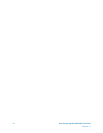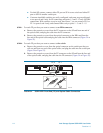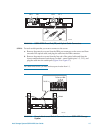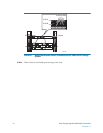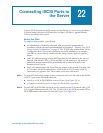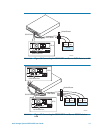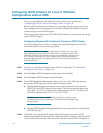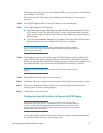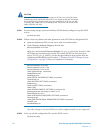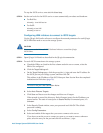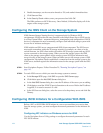
Intel Storage System SSR212PP User Guide 117
22
PRELIMINARY
Connecting iSCSI Ports to
the Server
Connect iSCSI data ports on iSCSI storage systems directly to a server, or to an Ethernet
LAN and connect the server iSCSI data ports to either a 10/100 or 1-gigabit Ethernet
LAN, as described in this section.
Before You Start
To complete this procedure, you will need:
An Administrative Worksheet completed with your network administrator in
accordance with the rules and recommendations in Procedure 3, "Planning Your iSCSI
Storage System Configuration," on page 15. The TCP/IP rules outlined in the "iSCSI
Configuration Rules" section are crucial to a successful installation. For example,
each NIC in a server directly connected to the storage system requires a separate
subnet.
One LAN cable per storage system iSCSI port that you will connect to the server or
network. You can use CAT 5, CAT 5e, and CAT 6 LAN cables up to 100 meters to
connect the storage-system iSCSI ports (labeled iSCSI-1000 on each SP) to an
Ethernet port on a server.
One LAN cable per server iSCSI port that you connect to the network. You need CAT
5 LAN cables for iSCSI connections to 10/100 LANs or CAT 6 cables for iSCSI
connections to 1-gigabit LANs. These cables can be up to 100 meters.
STEP 1. For each iSCSI port on the storage system, connect one end of a LAN cable to the iSCSI 0
or iSCSI 1 port on the SP and the other end:
directly to a NIC or iSCSI HBA in a server (Figure 58 or Figure 59), or
to a router or switch (Figure 60 or Figure 61) for network connections.
STEP 2. For each NIC or iSCSI HBA port on the server, connect one end of a network cable (CAT
6 for 1-gigabit Ethernet network, CAT 5 for 10/100 LAN) to the iSCSI port on the NIC or
iSCSI HBA and the other end to the network (Figure 60 or Figure 61).






